Woman Bicyclist, 74, Killed by Driver
Door County fatality reminder to drivers, bicyclists to follow safety precautions.
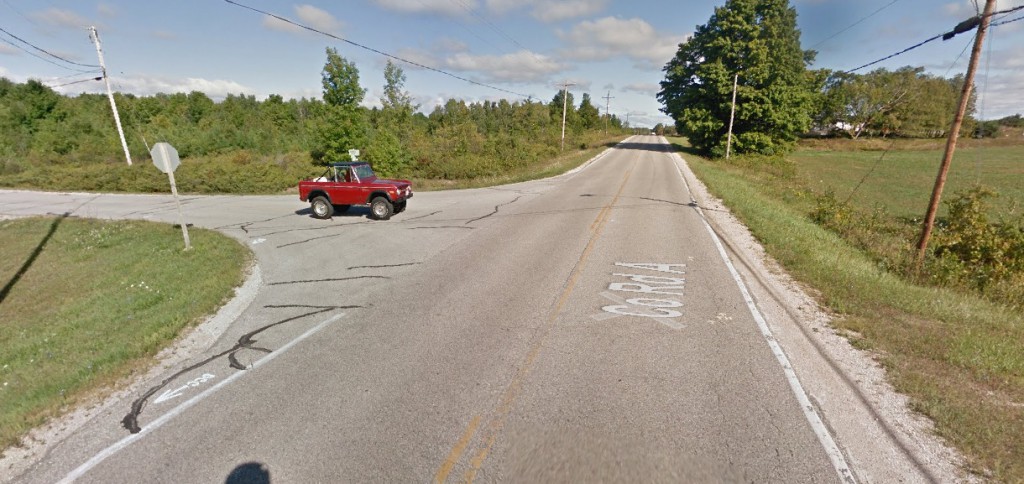
This screenshot from Google Maps shows the intersection where the fatal crash occurred. The view of the intersection is from the south, facing toward the direction the person driving the van came from.
Lou Branham of New Brighton, MN was riding her bike in Door County on Juddville Road and crossing County Highway A when a person driving a work van traveling south on the highway hit her.
The crash occurred around 4 p.m. on Saturday July 22. It was reported by the person driving that Branham didn’t stop at the stop sign located at the three-way intersection. Reports don’t indicate whether she was turning left or right onto the highway and the Door County Sheriff’s Department was unable to determine if she was turning. A crash report is not available at this time.
The stretch of highway, which has a speed of 55 mph, where the crash happened is slightly hilly and leaves the intersection blocked from view when heading from the north as the van was. It is important to note that crashes involving speeds greater than 40 mph are nearly always fatal.
The crash remains under investigation, but neither speed or alcohol are believed to be factors in the crash.
Information from statements made by the husband of Lou Branham, Gerald Branham, indicate Lou likely did stop at the stop sign on Juddville Road before entering the intersection.
“Her GPS readings show that she approached the intersection at 11.4 miles per hour, then slowed to 1.1 mile per hour in the intersection, then accelerated to 22.7 miles per hour when she was hit,” Gerald said in an interview with Myles Dannhausen Jr. of the Door County Pulse. “It seems to me that she had to have come to a stop to be going 1 mile per hour, which is a very slow walking speed. It looked like she almost made it through the intersection.”
The husband also described her as an experienced cyclist who rides 10,000 miles per year, and was familiar with the roads in the area. She was at the end of a 60-mile ride at the time of the crash. According to reporting by Dannhausen the couple has been camping in Peninsula State Park during the summer for 20 years.
According to statements made to police by the person driving the van, he came over the hill north of the intersection and saw Branham ride through the stop sign without checking for traffic. The driver further stated he was traveling at about 50 mph and applied his brakes, but was unable to avoid hitting Branham. He was the only witness of the crash.
The GPS data from Lou’s phone was provided to the Door County Sheriff’s Department on Tuesday.
Crashes happen less frequently on low-traffic rural roads than they do on busy urban arterial streets, but because of the higher speeds, they are more likely to result in serious injuries and fatalities. Whether or not an intersection is visible, when approaching in either role it is important to be cautious and reduce speeds as a driver and as a cyclist check twice before crossing streets with high speed limits.
People driving can also give cyclists who appear at intersections more space when there isn’t oncoming traffic and always slow down, as some cyclists may not hear an approaching car and could believe the roadway they just checked to be clear. That extra space and reduced speed could save a life.
When we are riding our bicycles and approaching an intersection, we should be aware that this is where most crashes happen. First, and most important, look for oncoming traffic in all directions long before you get to the intersection. Second, obey all traffic controls such as stop signs or traffic signals, even on very low traffic roads. Many people in cars tend to drive slightly over the speed limit because they know they won’t get a ticket and it gets them where they are going faster. For similar reasons, many people on bicycles will ride through stop signs or red lights, particularly on low traffic roads where conflicts are infrequent. While both speeding slightly and rolling stops are unlikely to earn you a ticket, the consequences of both can lead to a crash or change an injury to a fatality in case of a crash.
When riding straight through an intersection, watch for oncoming cars that might be turning left across our path. Sometimes people don’t use turn signals, so we have to be prepared. When in the right parking lane or shoulder, move left enough to make clear you are not turning right. This might mean riding completely to the left of a marked right turn lane at channelized intersections. Be particularly cautious if you are moving past a queue of motor vehicles on the right side. The illustration below shows proper lane position. A more detailed version of this illustration with other safety tips can be found on our Share and Be Aware pages here.
Last year at this time, eight people had been killed riding bicycles compared to two this year. More careful driving can help to reduce these numbers and avoid these tragedies.
Through the Share and Be Aware Program and the Safe Routes to School Program, the Wisconsin Bike Fed works to make both cycling and walking safer for everyone. Safer streets for walking and biking increase our independence and make our neighborhoods more vibrant and engaging. Every year in communities across the state, our Share and Be Aware Ambassadors and Bike Walk Instructors teach thousands of kids and adults how to safely walk, bike and drive.
While we can all work collectively to reduce the chances of fatal crashes like this happening, it’s important to remember riding a bicycle remains an incredibly safe and healthy thing to do. The number of crashes has been decreasing for years, even as more people ride bicycles for transportation. If you factor in the health benefits of cycling, riding a bicycle is more likely to help you live longer than result in a fatal crash.
Note that in the graph below, it was common to have 30-40 fatal bicycle crashes in the 1970s and today we average around ten. We have bike lanes and education to thank for the huge reduction in fatal crashes. In fact, our Share & Be Aware Program is one of the biggest programs we run at the Wisconsin Bike Fed. If you would like to request one of our S&BA Ambassadors for a class or to table an event, make your request online here. We can also give you free safety information to share in your community or at your employer.
“For individuals who shift from car to bicycle, we estimated that beneficial effects of increased physical activity are substantially larger (3–14 months gained) than the potential mortality effect of increased inhaled air pollution doses (0.8–40 days lost) and the increase in traffic accidents (5–9 days lost). Societal benefits are even larger because of a modest reduction in air pollution and greenhouse gas emissions and traffic accidents.
Conclusions: On average, the estimated health benefits of cycling were substantially larger than the risks relative to car driving for individuals shifting their mode of transport.” Source: Do the Health Benefits of Cycling Outweigh the Risks?
Biking
-
Oak Leaf Trail Projects Could Start in 2024
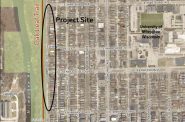 Jul 12th, 2023 by Graham Kilmer
Jul 12th, 2023 by Graham Kilmer
-
1896 Bicycle Factory Has Quite A History
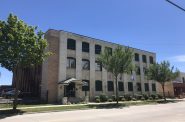 Sep 14th, 2021 by Michael Horne
Sep 14th, 2021 by Michael Horne
-
Honoring Biking Advocate Phil Van Valkenberg
 Jul 31st, 2021 by Spencer Black
Jul 31st, 2021 by Spencer Black

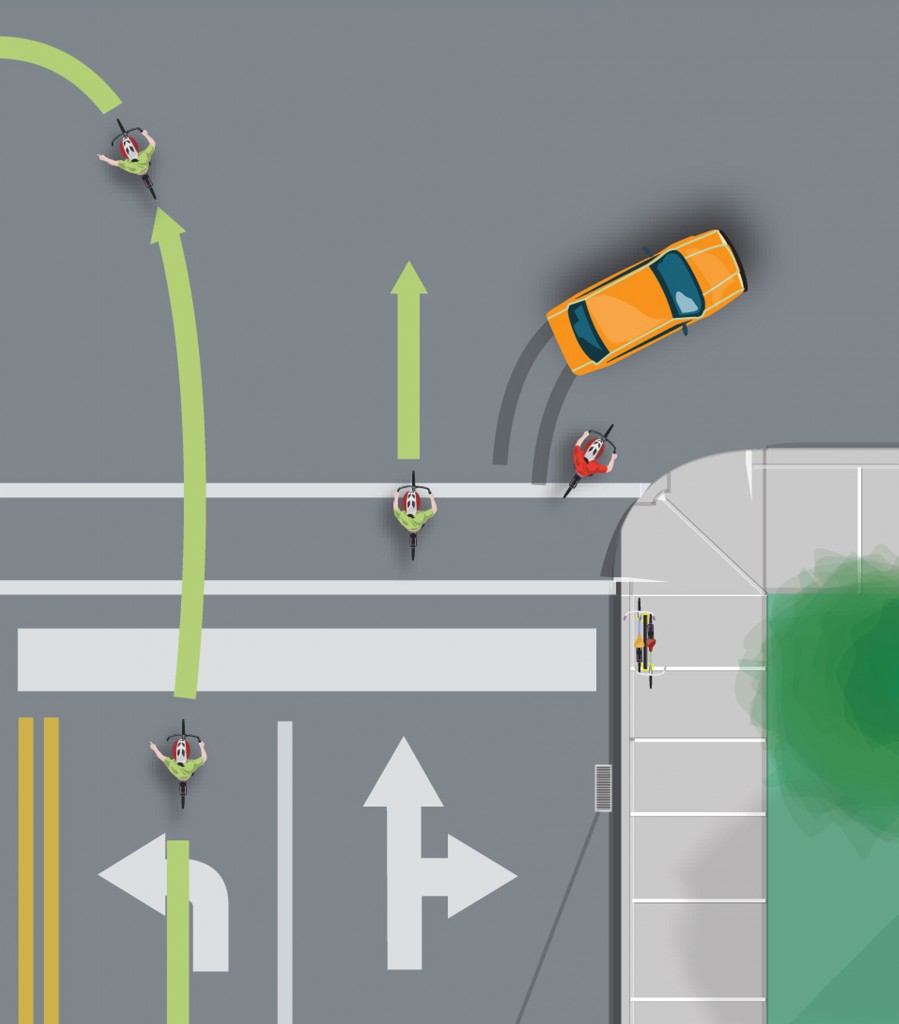
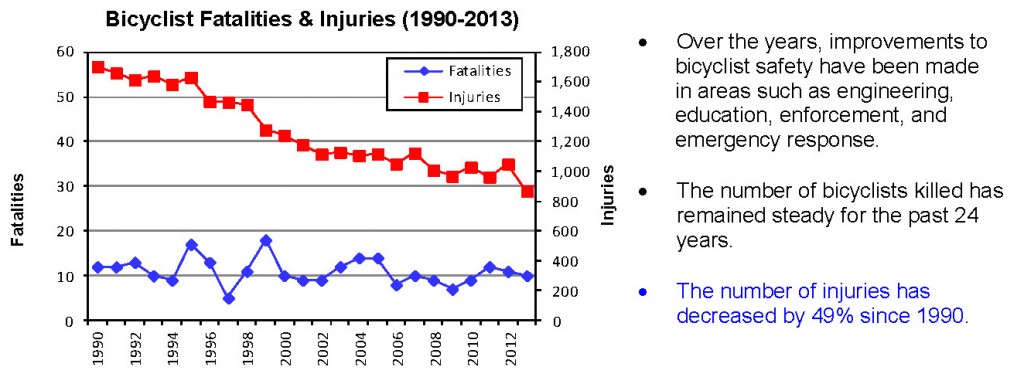
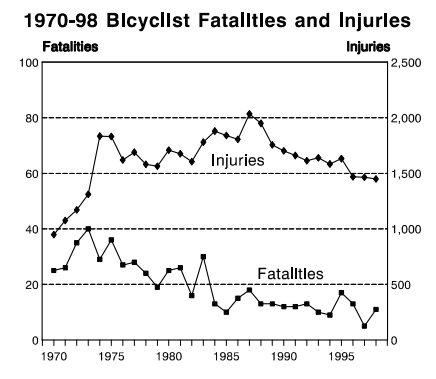




















“Hospital admissions because of bike injuries more than doubled between 1998 and 2013, … And the rise was the biggest with bikers ages 45 and over… While the death rate among child cyclists has plummeted in the past four decades, the mortality rate among cyclists ages 35 to 54 has tripled.” From this NPR story:http://www.npr.org/sections/health-shots/2015/09/02/436662737/as-more-adults-pedal-their-biking-injuries-and-deaths-are-spiking-too
I am an older biker and I realize it is dangerous. I don’t think the Bike Fed and other biking advocates do anyone a favor by downplaying or denying the very real dangers in biking. Everything possible should be done to make biking safer, but falsely claiming it to be safe helps no one.
I am an old cyclist, starting as a adult in 1974, following ten years as a kid cyclist from 1948-1958. I was a pretty much full time bike commuter in the Milwaukee area for 25 years, more full time when I was younger and could endure the cold winter cycling.
First of all I’d object to the title of this article, “Woman Bicyclist, 74, Killed by Driver.” It seems to me in reading this is that it should be “Woman Bicyclist, 74, Killed in Crash.” She apparently almost stopped, certainly as well as cars do at that stop sign, and somehow or other didn’t see the oncoming van. The 22 mph speed is probably from impact.
Then Joseph in the response #1 cites an article about how many more adults are being killed or injured in bike crashes, compared to kids. A big reason for this is that kids do not bike anymore. Have you seen a kid delivering newspapers by bike these days? Like we used to do?
But I will have to agree with Joseph that biking is more dangerous these days. Twice I rode x-country from Pacific to Atlantic. Don’t know if I’d do it again, if I could. Today I look at some roads in Milwaukee that I rode on 35 years ago and think to myself, “You’d be nuts to bike on that road with the always speeding traffic and cell phones.” A few years ago I was riding my Tour Easy recumbent near Stevens Point, to the right of the fog line (yes, I know we should be out in the lane to force overtaking traffic to move over into the other lane) in busy traffic and a pickup passed me with this tires on the fog line. His mirror probably went over the top of my helmet, it was that close. Deliberate? Careless? Texting? Who knows. I should have taken a longer route to stay off that busy highway. But we make decisions, thinking, it is just a short distance, that in retrospect are bad.
Unfortunately there are a good number of people who hate cyclists. (I don’t wear spandex so you can’t hate me for that.)
Detailed discussion of rural Door County WI bike/car accident, including photo of the intersection and discussion of status ofpolice investigation – perfect topic for Urban Milwaukee!